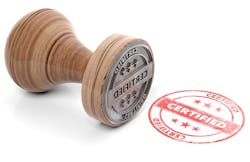Sometimes covering this industry is like watching a storm roll in: You watch the trend progress from a mere rumbling (“this might be the next big thing”) to a clap of thunder (“this is just around the corner”) to a full-on downpour (“this is here—now”).
That’s certainly what it was like when we started covering the increasing involvement of OEMs in collision repair and the introduction of OEM certifications. We watched it progress quickly, covering the procedures, tools, and equipment shops need to belong to these programs and repair these new vehicles.
We’ve written about the growing use of new metals and technology in vehicle production—and its wider impact in the collision repair industry—for years now.
At the time in 2014, Darrell Amberson, then chairman of the Automotive Service Association, estimated that less than 10 percent of shops in the U.S. met the certification and equipment requirements necessary to work on aluminum vehicles. That year, 50 percent of shop owners who participated in the FenderBender Industry Survey reported they didn’t belong to any OEM certification programs. Interestingly enough, over the years, that percentage hasn’t changed a whole lot.
And that got us thinking: Five-plus years in, how have those shops that were early adopters fared? Have they seen a return on their investments in OEM certifications?
It was quite the evaluation for associate editor Mike Munzenrider to make in the story “Would You Do It All Again?” and while the answer naturally varies by shop, I was pleased to read that the shops haven’t regretted their investments at all.
Check out the story for the full read, but as you do, make sure to note one of the themes that emerges from every person in the story: You must know your business. As this change in the industry has unfolded, there are—and will be—others to watch. The only way you’ll know for sure how to navigate these changes is by having a deep understanding of your shop, your staff, and your customers. Specialization may very well become the norm in the future, but we can make that transition easier by understanding exactly what our expertise is—and capitalizing off that.
Anna Zeck
Editorial Director
